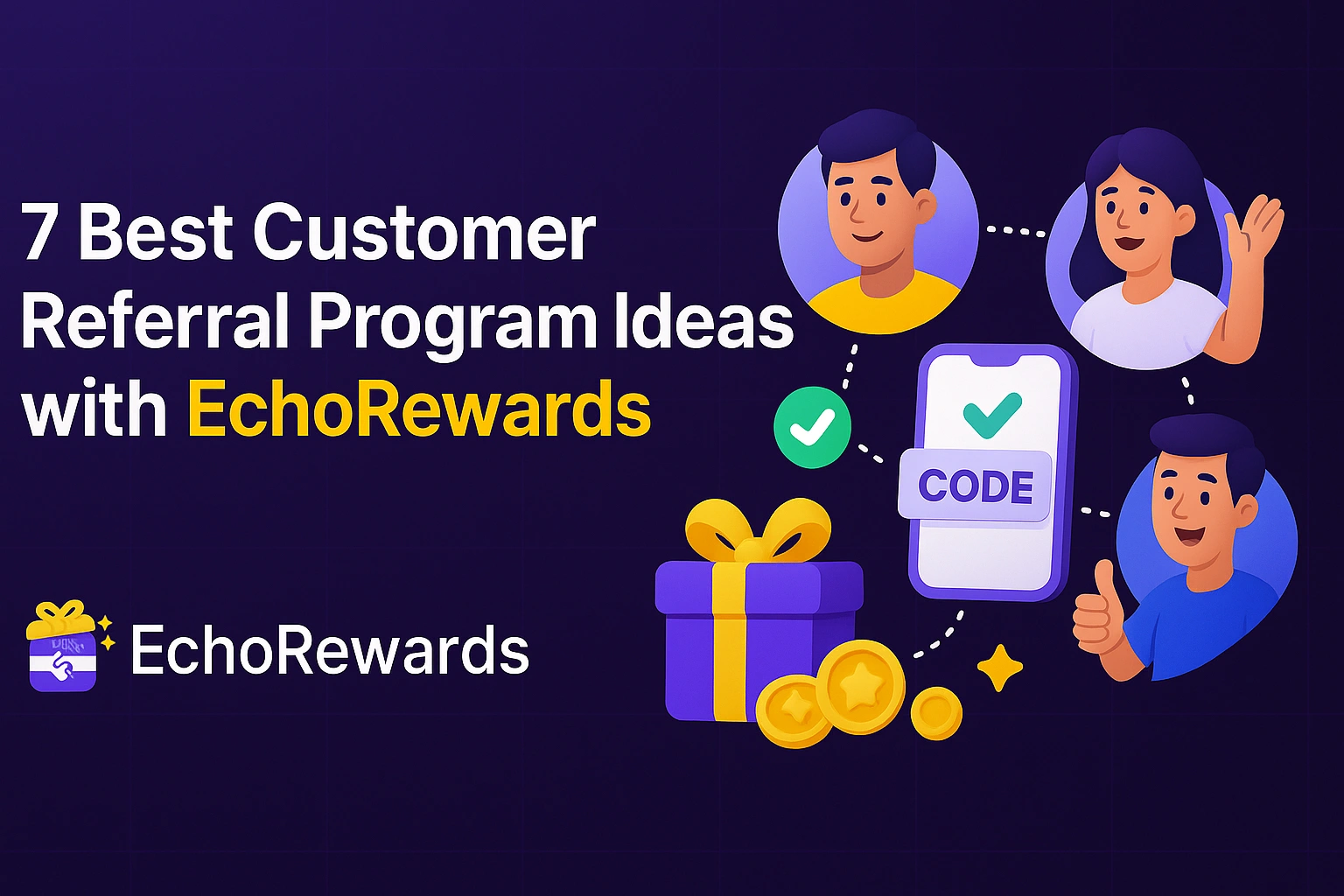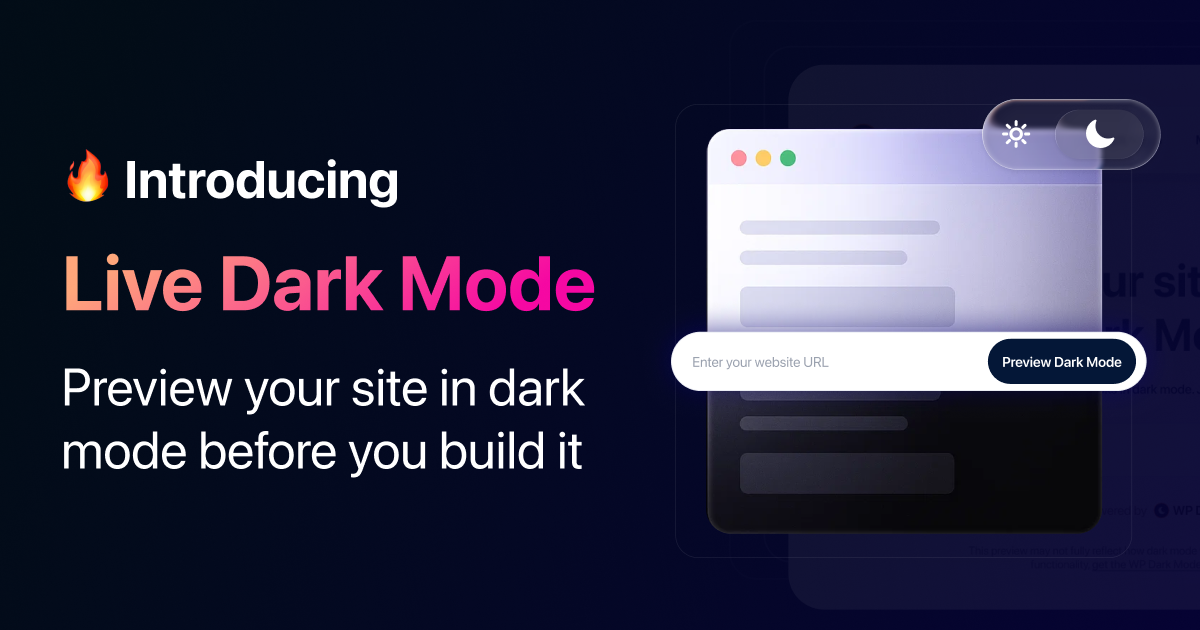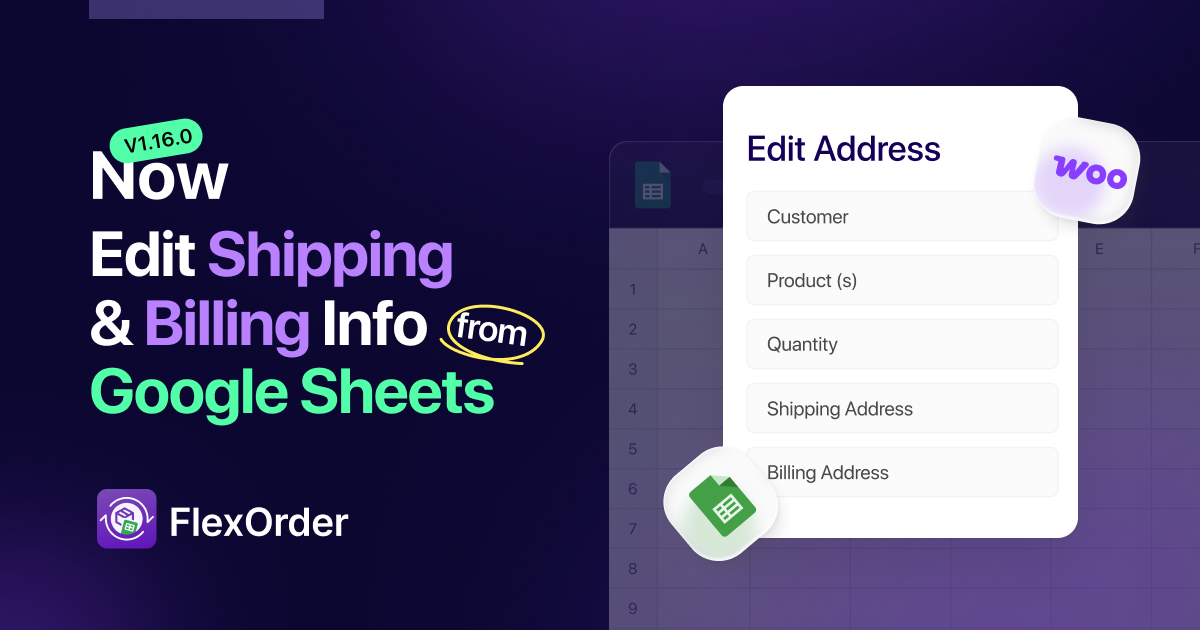Think of your customer referral program like a snowball rolling downhill—once it starts, it keeps growing. Happy customers tell their friends, who tell even more people. This is how the strategy creates a cycle of trust and new sales.
A well-designed referral program makes sharing easy, rewarding, and trackable. It gives your best customers an incentive to bring in more people—without the high costs of traditional marketing.
In this guide, we’ll explore 7 powerful referral program ideas you can use with EchoRewards. We guarantee all these ideas will help you turn word-of-mouth into a growth engine.
What is a Customer Referral Marketing Strategy?
Customer referral marketing encourages happy customers to refer friends and family in exchange for rewards. It is a way to grow your business using word-of-mouth. Hence, you gain new customers while keeping existing ones engaged with this approach.
Referral marketing strategy works by offering incentives when a customer brings in someone new. The referrer earns a reward, and the new customer might get a discount or bonus. This creates a win-win situation. So, referrals are more likely to happen.
People trust recommendations from friends more than ads. Studies from Texas Tech show that 83% of customers are willing to refer a business they love, but only 29% actually do. A good referral program reminds and motivates them to take action.
You need a structured program to make referral marketing work. Offer clear rewards, make sharing easy, and track referrals properly. In addition, a tool like EchoRewards can automate the process and maximize results.
Discover EchoRewards: The Smart Way to Run a Customer Referral Program
Referrals generate an easy way to grow your business. With EchoRewards, the process becomes simple. It lets you create a powerful customer referral program in just minutes. Furthermore, you can track referrals, reward customers, and boost sales—all in one place. No coding or technical skills are needed!
Customers love sharing great brands with friends. EchoRewards motivates them with exciting rewards. So technically, it turns referrals into repeat business. The best part? It runs automatically, so you can focus on growth.
Want to see how it works? Watch this video now:
Winning Customer Referral Programs with EchoRewards: 7 Proven Ideas
To make your customer referral program successful, you need to ensure that both referrers and new customers are rewarded. EchoRewards can make it happen. This tool will set up a referral system that keeps customers engaged and excited to share. On top of that, it is available in an affordable price range.
You can apply these proven customer referral program ideas using EchoRewards:
Idea 1: Mutual Discounts for Both Referrers and Friends
Offering a discount to both the referrer and their friend makes the referral process more attractive. When a customer shares his referral link, both parties receive a discount on their next purchase. For example, a store can offer a 10% discount to both the referrer and their friend.
To drive higher sales, businesses can set a minimum purchase amount for the discount to apply. This will not only enable mutual benefit but also encourage larger transactions.
Who Can Benefit from This Idea?
Businesses selling subscription-based services, e-commerce products, or SaaS solutions can use this model to increase customer acquisition while retaining existing users. This approach creates a win-win situation, which increases the chances of referrals.
Example:
Dropbox became famous for using a similar strategy. Instead of discounts, they offered extra storage space for both the referrer and the new user, which helped them grow exponentially.
Idea 2: Free Product or Store Credit Instead of Discounts
Businesses should try something different rather than always offering discounts for referrals. They may offer store credit or free products. When a customer successfully refers a friend, they receive a $5 store credit.
They can use this credit toward future purchases. To make this even more engaging, businesses can allow customers to accumulate credits and redeem them for higher-value products. Alternatively, after a set number of referrals, the referrer can receive a free product as a thank-you gift.
Who Can Benefit from This Idea?
E-commerce brands, beauty stores, and digital marketplaces can implement this method to create a sustainable referral ecosystem. This strategy not only encourages repeat purchases but also increases brand loyalty.
Example:
PayPal initially gained traction by offering $10 referral bonuses in users’ accounts instead of discounts. This incentivized people to use the platform more often.
Idea 3: Exclusive Early Access for Top Referrers
Giving customers VIP treatment makes them feel special and motivates them to refer more people. Businesses can allow top referrers to shop new collections before others. Moreover, businesses may give them early access to premium features or exclusive beta programs.
Who Can Benefit from This Idea?
This approach taps into customers’ desire to be part of an exclusive club. Subscription services, SaaS companies, and high-end fashion brands can adopt this strategy. This will undoubtedly create exclusivity for such businesses and encourage customers to share more.
Example:
A fashion brand could grant early access to its new season’s collection to customers who bring in five or more referrals. For instance, Glossier, a beauty brand, used a similar approach. It gave early product access and limited-edition rewards to its most engaged customers.
Idea 4: Social Media Sharing for Bonus Rewards
Encouraging customers to share referral links on social media can amplify brand exposure. A business can reward users with bonus points, additional discounts, or small cash rewards every time they share their referral link on Facebook, Instagram, Twitter, and other platforms.
To facilitate this process, companies should provide pre-written social media messages with eye-catching images. This approach creates organic word-of-mouth marketing while driving more engagement.
Who Can Benefit from This Idea?
This type of referral strategy makes sharing fun and rewarding. That’s why it is suitable for small businesses, online stores, and digital services.
Example:
Airbnb allows users to share referral links via social media. This way, the business offers travel credits to the referrer and their friend. It not only expands their reach but also generates a continuous stream of new customers.
Idea 5: VIP Tier-Based Referral Program
A tier-based referral program keeps customers engaged by offering increasingly better rewards. Initially, users may start with the basic rewards for a few referrals. Eventually, they will unlock higher-value incentives as they climb the referral ladder.
Who Can Benefit from This Idea?
This type of customer referral program can turn casual referrers into long-term brand ambassadors. So, brands with recurring customers—such as subscription-based services, e-commerce brands, and online learning platforms—can use this method.
Example:
Uber uses such a strategy. It has successfully increased referral rewards as users completed more referrals. Similarly, a company could offer $5 off for the first three referrals, a free product for five referrals, and an exclusive VIP membership for ten referrals.
Idea 6: Gamified Referral Contests
Adding a competitive edge to referrals can make the process more exciting. Businesses can run monthly or quarterly contests where the top referrers win prizes. They may receive store credit, free products, or exclusive discounts as rewards. A leaderboard showcasing the highest referrers can further encourage competition.
Who Can Benefit from This Idea?
People love competitions, and this method boosts referrals significantly. So, subscription services, E-commerce stores, and fitness apps can use this approach to engage customers and drive rapid referrals.
Example:
Tesla ran one of the most successful gamified referral programs. The top referrers could earn free cars, VIP events, or exclusive accessories through those programs.
Idea 7: Recurring Coupon
Instead of a one-time reward, businesses can offer a recurring discount or coupon for every new referral. For instance, a customer gets a $10 coupon that can be used every time they refer a new friend.
This strategy ensures long-term participation and keeps customers engaged over time. To make it even more valuable, businesses can allow customers to stack multiple coupons for bigger discounts.
Who Can Benefit from This Idea?
Retail businesses, food delivery services, and SaaS platforms can leverage this method. This is a great way to create a steady stream of referrals while maintaining customer loyalty.
Example:
A meal delivery service called HelloFresh implemented this referral strategy. They provided customers with recurring discounts for each new subscriber they brought in.
Take It Further with EchoRewards Pro: 4 More Creative Referral Program Ideas
Want to supercharge your referral program? Then you need advanced tools to increase engagement and conversions. EchoRewards Pro gives access to such tools to take your program to the next level. It also provided 4 more creative referral ideas, as follows:
Idea 1: Referral-Driven Subscription Discounts
Subscription-based businesses can boost referrals by offering ongoing discounts for every referral. When a customer refers a friend, both get a percentage discount on their next subscription renewal. Businesses can also let customers stack discounts for even greater savings. This will maintain high engagement.
Who Can Benefit from This Idea?
This type of referral model keeps users subscribed longer while bringing in new customers. It can increase retention and lower churn rates for SaaS platforms, membership-based services, streaming apps, and so on.
Example:
Spotify and Audible use similar tactics by offering free months for referrals.
Idea 2: Floating Referral Widget for Maximum Visibility
A floating referral widget keeps referral options visible at all times. Instead of hiding the program in menus, a sticky button remains on the screen, encouraging users to share with one click. A major benefit of such a referral program is that users don’t have to search for it. This will technically lead to higher participation rates.
Who Can Benefit from This Idea?
This approach is great for businesses looking to increase referral visibility without disrupting the user experience. Hence, it will work best on e-commerce stores, SaaS platforms, and service-based websites.
Example:
Many brands, including Shopify and BigCommerce, use persistent referral buttons to maximize conversions.
Idea 3: Personalized Referral Emails with Dynamic Tags
Sending automated, personalized referral emails makes the process feel more engaging. Businesses can use dynamic tags to insert the customer’s name, referral link, and progress.
For example, an email might say, “Hey [Name], you’re one referral away from earning a $10 reward!” This keeps users motivated and encourages them to share more.
Who Can Benefit from This Idea?
This method increases referral engagement through targeted communication. Therefore, it works well for E-commerce brands, SaaS companies, and online marketplaces.
Example:
Personalized emails feel more genuine and compelling. So, they pave the way to higher referral conversions. Amazon and Airbnb use this strategy to remind customers about their referral benefits.
Idea 4: Referral Program Funnel Integration
Try to integrate referrals into your sales funnel. It confirms that every customer sees the program. Businesses can add referral sign-ups to checkout pages, thank-you emails, or post-purchase pop-ups.
For example, after a customer completes a purchase, a referral pop-up can offer them a discount if they share the product with a friend. This method makes referrals a natural part of the buying process. As a result, users are more eager to participate in the referral program.
Who Can Benefit from This Idea?
It is good for businesses selling physical products, digital services, or subscriptions. They can use this approach to turn every buyer into a brand advocate.
Example:
Tesla integrated referrals into their purchase flow. This act led to massive word-of-mouth marketing success.
Over to You
A customer referral program is one of the easiest ways to grow your business. When happy customers share your brand, you get high-quality leads without spending a fortune on ads. Whether you offer discounts, free products, or VIP perks, the right approach will generate recurring customers. Plus, it will encourage users to suggest your brand to others.
If you want to launch a simple, rewarding, and fully automated referral program, try EchoRewards. It promises to turn referrals into revenue.
Start growing with word-of-mouth marketing with EchoRewards!
FAQ
What is a referral technique?
It is a strategy where businesses encourage customers to recommend them. It often includes rewards for both the referrer and the referred person. It makes word-of-mouth marketing more effective.
What is a referral type?
It refers to how a new customer finds a business. This can be through word-of-mouth, social media, online reviews, email marketing, or partner programs. Businesses can understand which sources drive the most customers by tracking referral types.
What is the most successful customer referral program?
Some of the most famous referral programs include PayPal, Dropbox, Amazon Prime, and Airbnb. PayPal used cash incentives, Dropbox offered free storage, Amazon Prime encouraged referrals with exclusive perks, and Airbnb rewarded users with travel credits. These strategies helped them grow rapidly.
What are the 8 steps in the referral process?
The referral process includes setting clear goals, designing a structured program, and choosing rewards. Businesses should also create an attractive offer and integrate tracking systems. To maximize success, they should promote and optimize the program based on performance data.





